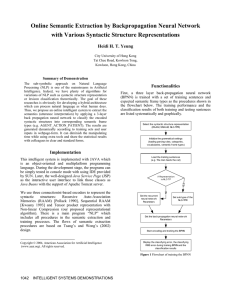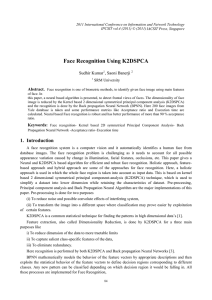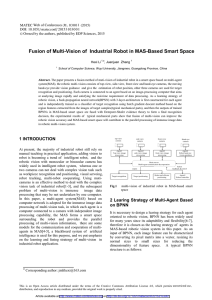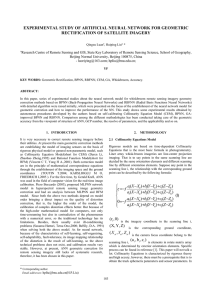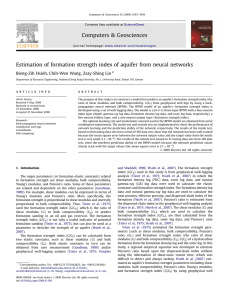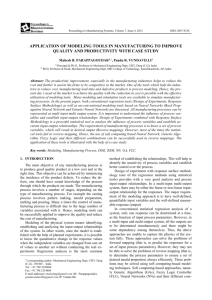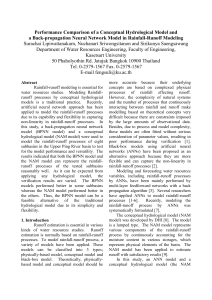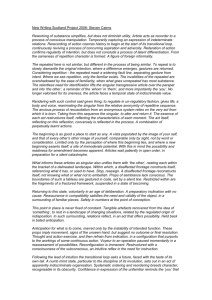CHAPTER 5 Summary and scope of future work 5 1 Summary Fed
advertisement
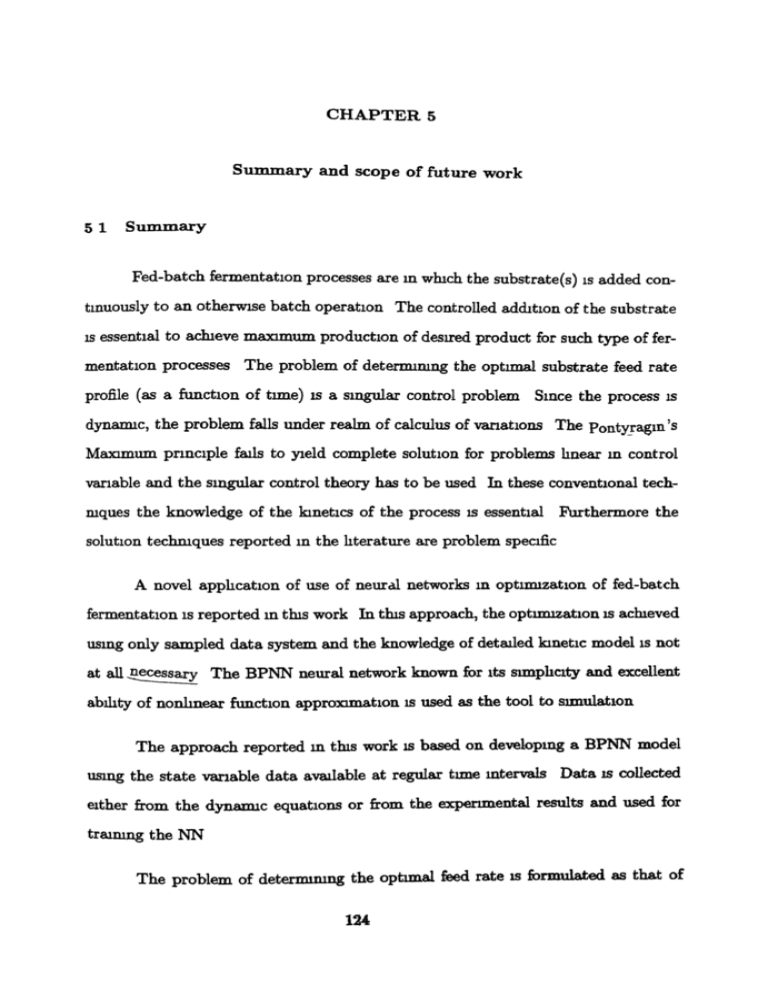
CHAPTER 5 Summary and scope of future work 51 Summary Fed-batch fermentation processes are in wluch the substrate(s) a added continuously to an otherwise batch operation The controlled addition of the substrate is essential to a h e v e m8x1mum production of desired product for such type offermentation processes The problem of deterrmmng the optimal substrate feed rate profile (as a function of time) is a singular control problem Since the process is dynarmc, the problem falls under realm of calculus of vanations The pontyra6m's Maxlmum principle fads to yield complete solution for problems hnear in control vanable and the singular control theory has to be used In these conventional techmques the knowledge of the bnetics of the process is essential Furthermore the solutlon techques reported in the kterature are problem specific A novel apphcation of use of neural networks in optmzatron of fed-batch fermentation is reported in t h s work In t h s approach, the optlrmzation is aciveved using only sampled data system and the knowledge of detslled hnetic model is not at all secessary The BPNN neural network known for its slmpkcity and excellent abhty of nodnear function approxunation is used as the tool to slmulatlon The approach reported in t h s work is based on developing a BPNN model using the state variable data awIable at regular tlme intervals Data IS collected elther from the dynmc equations or &om the expenmental results and used for tramng the NN The problem of deternurung the o p t d fead rate is f;omuiated as that of d~terrmnlngthe feed rate at each time interval, and thereby generating the optimal feeding p o l l c ~for entire duration of the fermentation The optimzatlon problem formulated uslng dwcretlzatlon pnnclple now becomes a problem In calculus unlike orlglnalvariational calculus problem and is acheved with General Reduced Grahent Algorlt hm Apart optirmzatlon model glves valuable information regarding contribution feed, volume and the concentratlon of the species to a product formation or the concentratlon of any other species In addition, it can also be used as d y n m c s~mulatorof the process, ~artlcularl~ where the kinetics ~snot known ---- First, processes for whch analytlcal (Single cell protein growth) and numerlcal (r-DNA protein productlon) solutions are known using singular control theory are considered The optlmal feedng policles obtmned using neural net model of the process are compared wlt h the known optlmal solutions In order to demonstrate the appllcabllity of the algorithm developed in t h s work The algorithm is then appbed for the process in whch optimal solutions are not known (Pemcilkn production and Invertase production) The tlme extent ed data is found more effectlve m trasmng of the net, empowerlng ~t with extrapolation capablktles In the cases of lower dxnensloned system where analytlcal solutions are known the optlmal feed pollcies show good pattern recogmzing characterlstlce of the trarned net In the optlrmzatlon of fvgher dunen-sional systems different u t i d guesses converge to different optimal policies though mntaxung accurate speclfic growth and metabokc production rate pattern pr* drction Here we considered the system of production of r-DNA proteln (Case 11) The abihty of neural net is demonstrated to mrmc a hgher dunenslonal system for optwzatton of invertase productlon The expemental data reported in the h t ~ a t u r eis used for trrumng BPNN The BPNN model are thus found to be slut- able far prelctlng the dynamics of the fed-batch fermentat~onproce\ser; well aq for detemmng the feeding strategies It can be expected that the dncontlnuou,, profile obtained using BPNN will not satisfy all the optunality condit~onsposed by control theory As a result, discrete feed profile may be "suboptlmaltl when compared with that whch in principle could be obtaned uslng singular control theory Therefore, it 1s poss~bleto further refine the BPNN generated polley using singular control The case 11 with hybnd approach is found to give the initial guesses for the earlier optimal pohcies, converging in some local optunals, whereas the BPNN optimals are prehcting close to true optimum The optimal pohcies generated, although not "true" optma1 in framework of singular theory are easy to rmplement and can also be used as irutlal guess of the "true" optimal , rt can be Although the algorithm 1s developed for fed-batch fcmenters polymer~zation reactors adopted for chemcal processes like sem-batch -- - --52 Scope of future work The approach demonstrated here has not been reported earlier in the hterature Although the o p t m l fee- pohcies given by BPNN match well mth "true" optmum , there is a need for further improvement of the pohcies Some of the posslble approaches that needs to be cons~deredare a) the BPNN configurat~onand tramng b) usage of other types of networks The parameters of the BPNN, z e, the total number of iterations, the number of hdden nodes and hidden layers, the type of neuron used can be varied and the best set of parametefs for tram% can be estunated The power of generahzation imbibed m the Hopfield network can be utilized in modehng, optmzation and control of fermentation processes our approach can be extended for orultivarlitbk optimzat~onof fed-batch In t h s work the optimal profile of carbon ( " C " ) feeding 1. worked out Nitrogen ("N") feehng can also be optirmzed, along with other variables of the system T h s multivariable optirmzation approach is approprlate for the system of pe~llcillinproduction Ultimate test to the abillty of BPNN can be the modellng and optirmzatron of the system where only the industrial data is avalable The unsolved problem of adaptwe control, the onbne optlrmzation of batchlfed-batch processes can also be encountered
